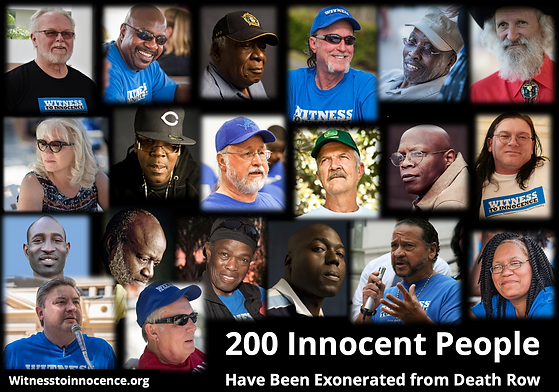US Reaches 200th Exoneration from Death Row
2o0th exoneree was wrongfully convicted in 1983 for two murders at the California Medical Center in Vacaville, California

As of July 1, 2024, 200 prisoners in the U.S. have been exonerated and freed from death row since 1973. Even as the use of the death penalty has precipitously declined across the country, exonerations continue to occur, demonstrating serious risk of executing the innocent. The shocking milestone of 200 exonerations tells us that wherever the death penalty exists, innocent people are at risk of being wrongfully sent to death row and even executed.
Larry Roberts, the 200th exoneree, was wrongfully convicted in 1983 for the murder of a fellow prisoner and prison guard at the California Medical Center in Vacaville, California. The only witnesses to these stabbings were fellow prisoners who testified against Mr. Roberts; he was sentenced to death for both killings. Years later, the California Supreme Court overturned Mr. Roberts’ conviction for the death of the prison guard but left his death sentence in place. After 41 years behind bars, the California Attorney General’s Office has now agreed with a U.S. district court judge who granted Mr. Roberts a new trial and has said it will not retry him. Mr. Roberts’ exoneration is a powerful reminder of the fallibility of the death penalty, and one more reason 50% of the American public no longer believes their government can fairly use the death penalty.
Given the fallibility of human judgment, there has always been the danger that an execution could result in the killing of an innocent person. Nevertheless, when the U.S. Supreme Court first held the administration of the death penalty to be unconstitutional in 1972 in Furman v. Georgia, there was barely any mention of the issue of innocence in the nine opinions issued. Although mistakes were surely made in the past, the assumption prevailed that such cases were few and far between. Almost everyone on death row was surely guilty. In fact, the Court would clarify Furman in a later case in 1976, putting the death penalty back on the books under different circumstances.
However, as federal courts began to more thoroughly review whether state criminal defendants were afforded their guaranteed rights to due process, errors and official misconduct began to regularly appear, requiring retrials. When defendants were now afforded more experienced counsel, with fairly selected juries, and were granted access to scientific testing, some were acquitted and released.
It is now clear that innocent defendants will be convicted and sentenced to death with some regularity as long as the death penalty exists. It is unlikely that the appeals process, which is mainly focused on legal errors and not on factual determinations, will catch all the mistakes. Reforms have been begrudgingly implemented, increasing both the costs and the time that the death penalty consumes, but have not been sufficient to overcome human error. The popularity and use of capital punishment have rapidly declined as the innocence issue has gained attention. The remaining question is how many innocent lives are worth sacrificing to preserve this punishment.
Death-row survivors have now been exonerated in 124 counties in 30 states, according to the Death Penalty Policy Project. More than half of those wrongful convictions come from 29 counties that have multiple death-row exonerations. While official misconduct and/or perjury was present in more than 3/4 of the cases in the counties with a single adjudicated death-row exoneration (72 of 95, 75.8%), that number was a staggering 90.3% of the cases (96 of 105) in the counties with multiple wrongful capital convictions.
“In the 20 years I’ve been telling my story, I’ve seen the American public lose its fervor for the death penalty,” said Ray Krone, the 100th death row exoneree and co-founder of Witness to Innocence with Sister Helen Prejean, author of Dead Man Walking. “Reaching the 200th death row exoneration is truly a bittersweet milestone. Sadly in just 12 years since my exoneration, there have been 100 more exonerations of the innocent from a death sentence. It shows that our system is capable of both prosecuting and convicting the innocent. Encouragingly, though, the milestone can serve to increase public awareness of such injustice. Awareness itself, has in some instances freed those wrongfully convicted. An innocent life has been saved this time, but how many others on death row will not be so fortunate. There have been 200 mistakes. It’s time to end the death penalty experiment.”
Witness to Innocence is an organization of, by, and for death row exonerees, and their mission is to empower exonerated death row survivors to be the most powerful and effective voice in the fight to end the death penalty and reform the justice system in the United States. You can visit the organization's website to learn more, and watch a brief video "Witness to Innocence Introduction."










